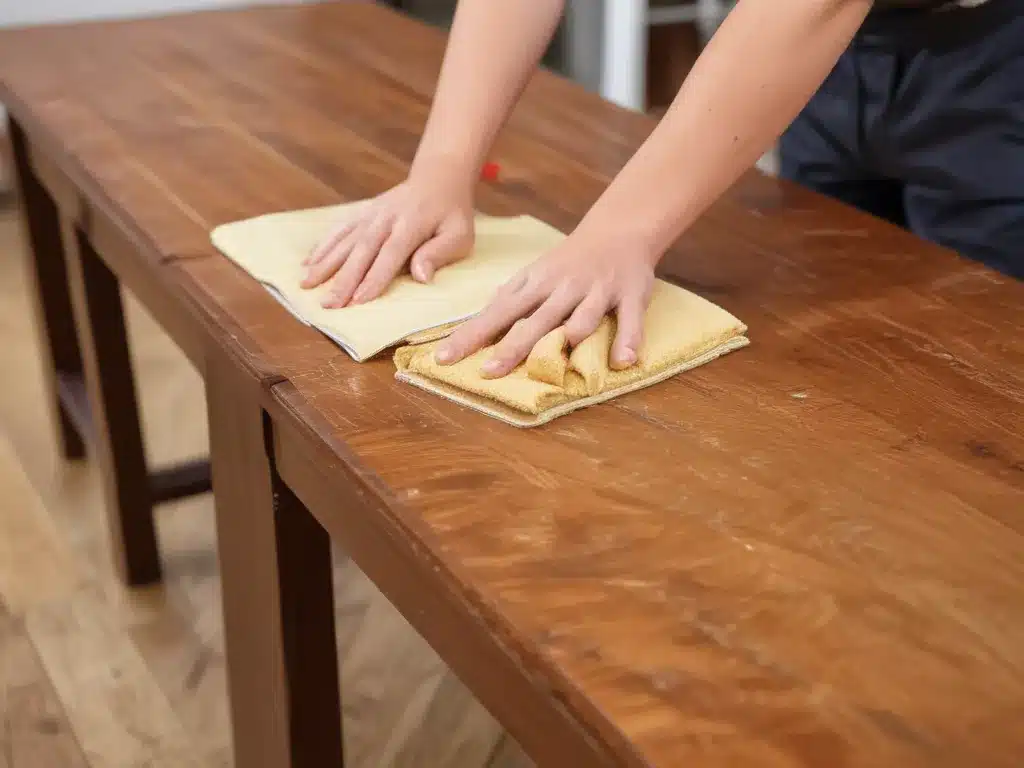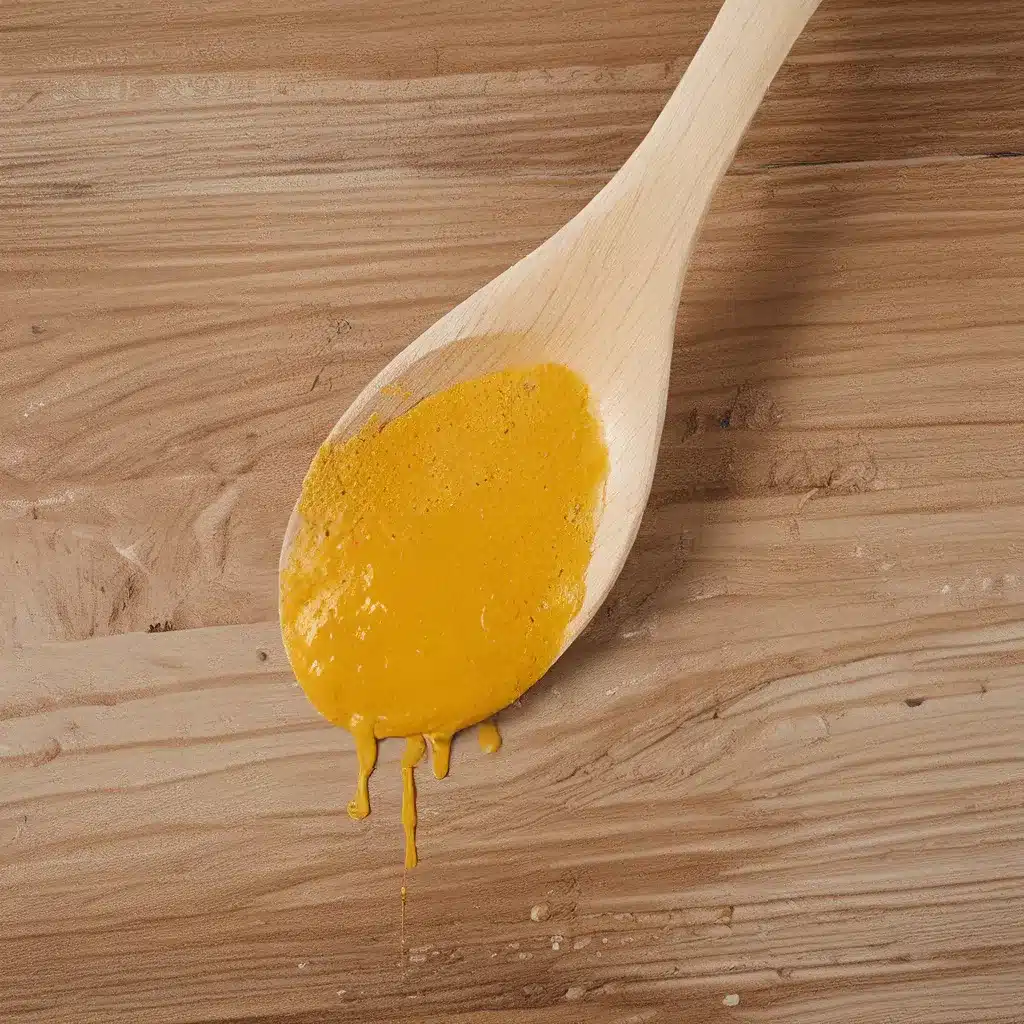Understanding the Importance of Deep Cleaning Wood Furniture
As an avid DIY enthusiast and someone who values the beauty and longevity of my home furnishings, I have always been passionate about maintaining my wood furniture to the highest standard. Over the years, I have learned that deep cleaning wood furniture is crucial not only for preserving its aesthetic appeal but also for ensuring its structural integrity and prolonging its lifespan. In this comprehensive guide, I will share my expertise and insights on how to deep clean wood furniture from top to bottom, covering every step of the process in meticulous detail.
The significance of deep cleaning wood furniture cannot be overstated. Regular cleaning and maintenance help to remove accumulated dirt, grime, and debris that can dull the finish, compromise the integrity of the wood, and even attract pests. By engaging in a thorough deep cleaning routine, we can restore the natural luster and beauty of our wood furnishings, while also protecting them from the wear and tear of everyday use.
Preparing for the Deep Cleaning Process
Before we dive into the step-by-step process of deep cleaning wood furniture, it is crucial to properly prepare the workspace and gather the necessary tools and materials. The subject of preparation is an essential aspect of the deep cleaning process, as it sets the stage for a successful and efficient cleaning experience.
The first step in preparing for deep cleaning is to clear the area around the furniture. I recommend moving any nearby decor, electronics, or other items to a safe location, ensuring that the furniture is easily accessible and that there are no obstacles in the way. This not only makes the cleaning process more efficient but also helps to prevent any accidental damage to surrounding items.
Next, I suggest gathering the appropriate cleaning supplies. The subject of the necessary tools and materials is a crucial consideration, as using the wrong products can potentially harm the wood or leave behind unwanted residues. Some of the essential items I recommend having on hand include a soft-bristle brush, a microfiber cloth, a mild wood cleaner or mild soap solution, a wood polish or conditioner, and perhaps even a vacuum cleaner with a hose attachment for accessing hard-to-reach areas.
It is also important to ensure that the work surface is clean and free of any debris or clutter. This can be achieved by thoroughly wiping down the area with a damp cloth or paper towel, removing any dust or crumbs that may have accumulated. By creating a clean and organized workspace, I can maintain better control over the deep cleaning process and minimize the risk of inadvertently spreading dirt or grime to other areas of the furniture.
Assessing the Condition of the Wood Furniture
Before initiating the deep cleaning process, it is essential to carefully examine the condition of the wood furniture. This assessment serves as the foundation for determining the appropriate cleaning techniques and any necessary restorative measures.
The subject of assessing the condition of the wood furniture is a crucial step that should not be overlooked. By carefully inspecting the surface, I can identify any existing damage, such as scratches, stains, or signs of wear and tear. This information will then guide my selection of the most suitable cleaning methods and any necessary additional treatments.
One of the key aspects of the assessment process is to carefully examine the finish of the wood. I will run my fingers along the surface, feeling for any roughness or unevenness that may indicate a compromised finish. I will also visually inspect the furniture, looking for any discoloration, dullness, or inconsistencies in the sheen, as these can be indicators of the current state of the finish.
Another important factor to consider is the overall structural integrity of the furniture. I will carefully inspect the joints, legs, and other load-bearing components, checking for any signs of looseness, cracking, or other structural issues. This information will help me determine if any repairs or reinforcements may be necessary before proceeding with the deep cleaning process.
By thoroughly assessing the condition of the wood furniture, I can ensure that the deep cleaning process is tailored to the specific needs of the piece, maximizing the effectiveness of the cleaning and potentially identifying any underlying issues that may require additional attention.
Removing Surface Dirt and Debris
With the preparatory steps complete and the condition of the wood furniture assessed, the next phase of the deep cleaning process involves removing the surface-level dirt and debris. This is a crucial step that lays the foundation for the more in-depth cleaning that will follow.
The subject of removing surface dirt and debris is a fundamental aspect of deep cleaning wood furniture. By addressing this initial layer of grime, I can effectively expose the underlying wood surface and create a clean canvas for the subsequent cleaning and polishing steps.
One of the primary tools I will use for this task is a soft-bristle brush. Gently sweeping the brush across the surface of the furniture, I can dislodge and lift away any loose dust, dirt, or debris that has accumulated over time. It is important to pay special attention to the crevices, corners, and hard-to-reach areas, as these tend to be magnets for accumulated grime.
In addition to the soft-bristle brush, I may also employ the use of a vacuum cleaner with a hose attachment. The suction power of the vacuum can effectively capture and remove any fine particles or stubborn debris that the brush may have missed. By carefully maneuvering the vacuum hose around the furniture, I can ensure that every nook and cranny is thoroughly cleaned.
Once the surface-level dirt and debris have been removed, I will then use a microfiber cloth to wipe down the entire surface of the furniture. Microfiber cloths are incredibly effective at trapping and absorbing dust, and their gentle nature helps to avoid any potential scratches or damage to the wood finish.
By meticulously removing the surface-level dirt and debris, I lay the groundwork for the more intensive cleaning steps that will follow, ensuring that the wood furniture is prepared for a deep, thorough cleansing.
Applying the Wood Cleaner
With the surface-level dirt and debris removed, the next step in the deep cleaning process is to apply a suitable wood cleaner. The choice of wood cleaner is a crucial decision, as the wrong product can potentially harm the finish or leave behind unwanted residues.
The subject of applying the wood cleaner is an essential aspect of the deep cleaning process. The appropriate selection and application of the cleaner can make a significant difference in the overall effectiveness of the cleaning and the long-term preservation of the wood furniture.
When choosing a wood cleaner, I prefer to use a mild, pH-balanced formula that is specifically designed for wood surfaces. These types of cleaners are typically gentle enough to avoid damaging the finish, yet effective in removing ingrained dirt, grime, and even stubborn stains.
To apply the wood cleaner, I will first test it on an inconspicuous area of the furniture to ensure compatibility and assess the results. Once I am satisfied with the test area, I will carefully follow the manufacturer’s instructions, applying the cleaner evenly across the surface using a soft, lint-free cloth or a sponge.
It is important to work in small sections, taking the time to thoroughly clean each area before moving on to the next. I will pay special attention to the crevices, joints, and other hard-to-reach areas, ensuring that the cleaner penetrates and addresses any accumulated buildup.
After allowing the wood cleaner to dwell for the recommended duration, I will then use a clean, damp cloth to gently wipe away any residues or excess cleaner. This step is crucial, as leaving behind any cleaner can potentially interfere with the subsequent polishing or conditioning steps.
By carefully selecting and applying the appropriate wood cleaner, I can effectively remove deep-seated dirt and grime, restoring the natural beauty and lustre of the wood furniture.
Polishing and Conditioning the Wood
Following the application of the wood cleaner, the next step in the deep cleaning process is to polish and condition the wood. This step is essential for rejuvenating the surface, enhancing the overall appearance, and providing long-term protection for the furniture.
The subject of polishing and conditioning the wood is a crucial aspect of the deep cleaning process. By applying a high-quality wood polish and conditioner, I can restore the furniture’s shine, nourish the wood, and create a protective barrier against future wear and tear.
When selecting a wood polish and conditioner, I prefer to use products that are specifically formulated for the type of wood used in the furniture. These specialized products are designed to work in harmony with the natural properties of the wood, ensuring maximum effectiveness and long-lasting results.
To apply the polish and conditioner, I will first ensure that the surface of the furniture is completely dry and free of any residual cleaner. I will then use a clean, soft cloth to gently apply the product, working in small, circular motions to ensure even coverage.
It is important to pay close attention to the manufacturer’s instructions, as different products may have varying application techniques and drying times. Some may require a brief dwell time before being buffed to a shine, while others may need to be allowed to fully absorb into the wood before any excess is wiped away.
By carefully polishing and conditioning the wood, I can restore the natural luster and sheen, while also nourishing and protecting the surface from future wear and tear. This step is crucial for maintaining the long-term beauty and integrity of the wood furniture.
Addressing Specific Cleaning Challenges
While the previous steps have covered the general deep cleaning process, there may be instances where the furniture presents specific cleaning challenges that require additional attention. In this section, I will address some of the more common issues that can arise and provide guidance on how to effectively tackle them.
One such challenge is the presence of stubborn stains or discolorations on the wood surface. These blemishes can be particularly frustrating, as they can detract from the overall appearance of the furniture and may be resistant to the standard cleaning methods. In such cases, I may need to employ specialized stain-removing techniques, such as using a gentle abrasive or a targeted stain remover formulated for wood surfaces.
Another common challenge is dealing with water spots or rings on the wood, often caused by condensation from glassware or other moisture-related incidents. These unsightly blemishes can be tricky to remove, but with the right approach, they can be addressed effectively. I may need to use a wood-safe polishing compound or a mixture of vinegar and water to gently lift and remove the water spots without damaging the underlying finish.
In some cases, the wood furniture may have experienced more significant damage, such as deep scratches, gouges, or even missing veneer. These types of issues may require more extensive repair work, which may involve the use of wood filler, sanding, or even professional refinishing services. While I can attempt some basic restorative measures, it is important to know when to seek the expertise of a qualified furniture restoration specialist.
By addressing these specific cleaning challenges with care and the appropriate techniques, I can ensure that the wood furniture is restored to its former glory, with any blemishes or imperfections effectively addressed.
Maintaining the Cleanliness of Wood Furniture
The deep cleaning process is an essential step in preserving the beauty and longevity of wood furniture, but it is equally important to maintain that cleanliness through regular care and attention. In this final section, I will share my tips and strategies for keeping wood furniture looking its best long after the deep cleaning is complete.
The subject of maintaining the cleanliness of wood furniture is a crucial aspect of the overall care and preservation of these valuable assets. By establishing a consistent routine of light cleaning and occasional deeper maintenance, I can ensure that the wood furniture remains in pristine condition for years to come.
One of the key components of maintaining wood furniture cleanliness is to implement a regular dusting and light cleaning regimen. This can be as simple as using a microfiber cloth to gently wipe down the surfaces on a weekly or bi-weekly basis, removing any accumulated dust or light grime. This proactive approach helps to prevent the buildup of debris that can eventually lead to more significant cleaning challenges.
In addition to regular dusting, I also recommend incorporating occasional spot cleaning as needed. If I notice any spills, smudges, or minor stains, I can address them promptly using a mild wood cleaner and a soft cloth. This quick action can help to prevent the development of more stubborn blemishes that may require more intensive cleaning efforts.
It is also important to consider the frequency of the deeper cleaning process. While the initial deep clean may be a significant undertaking, I generally recommend repeating this process every six months to a year, depending on the level of usage and exposure the furniture experiences. This schedule helps to maintain the wood’s natural luster and prevent the gradual accumulation of dirt, grime, and other damaging elements.
By consistently following these maintenance practices, I can ensure that my wood furniture remains in pristine condition, preserving its beauty and extending its functional lifespan. Regular care and attention are the keys to keeping wood furniture looking its absolute best, year after year.
Conclusion: The Rewards of Dedicated Wood Furniture Care
As I reflect on the comprehensive deep cleaning process I have outlined, I am reminded of the immense satisfaction and pride that comes from restoring the beauty and integrity of wood furniture. The time and effort invested in this endeavor are well worth it, as the end result is a piece of furniture that not only looks stunning but also promises to withstand the test of time.
The deep cleaning of wood furniture is not merely a chore, but rather a labor of love. By dedicating myself to this task, I am not only preserving the physical assets in my home but also honoring the craftsmanship and artistry that went into creating these pieces. Each piece of wood furniture has a story to tell, and by caring for it with the utmost diligence, I am ensuring that these stories continue to be passed down through the generations.
Moreover, the benefits of deep cleaning wood furniture extend beyond the aesthetic appeal. By removing ingrained dirt, grime, and other damaging elements, I am protecting the structural integrity of the wood, preventing premature wear and tear, and ultimately extending the lifespan of these precious furnishings. This not only saves me money in the long run but also allows me to enjoy the timeless beauty of my wood furniture for many years to come.
As I conclude this guide, I encourage all readers to embrace the art of deep cleaning wood furniture. It is a rewarding and often meditative process that allows us to connect with the natural world and appreciate the craftsmanship that has gone into creating these beloved pieces. By dedicating ourselves to this task, we can ensure that our wood furniture remains a source of joy, comfort, and lasting value for generations to come.
If you are in need of professional wood furniture cleaning services, I highly recommend exploring the offerings at AdamCleaning.uk/services/. Their team of experienced technicians is dedicated to providing top-quality deep cleaning and restoration services, ensuring that your wood furniture is treated with the utmost care and attention.







